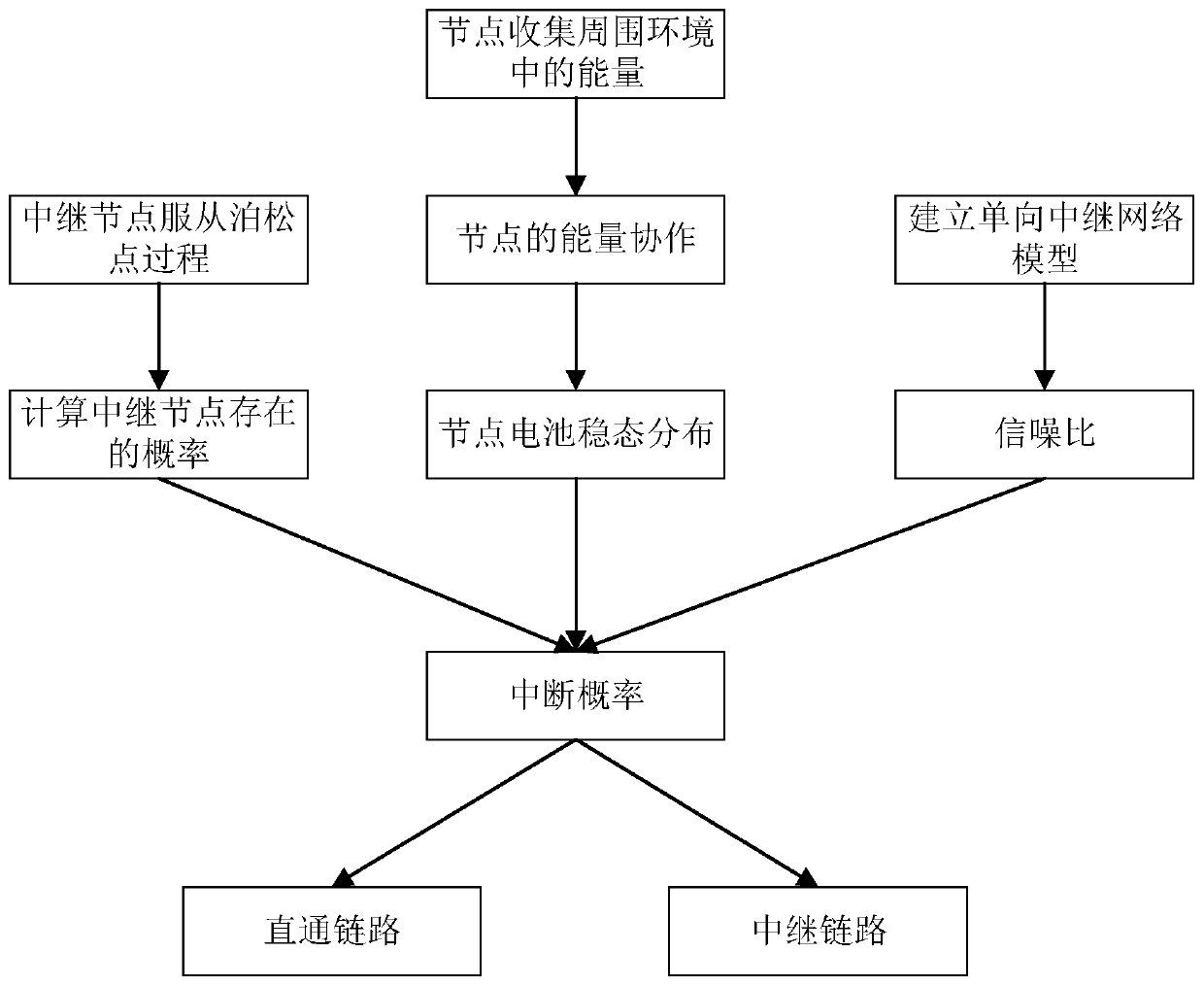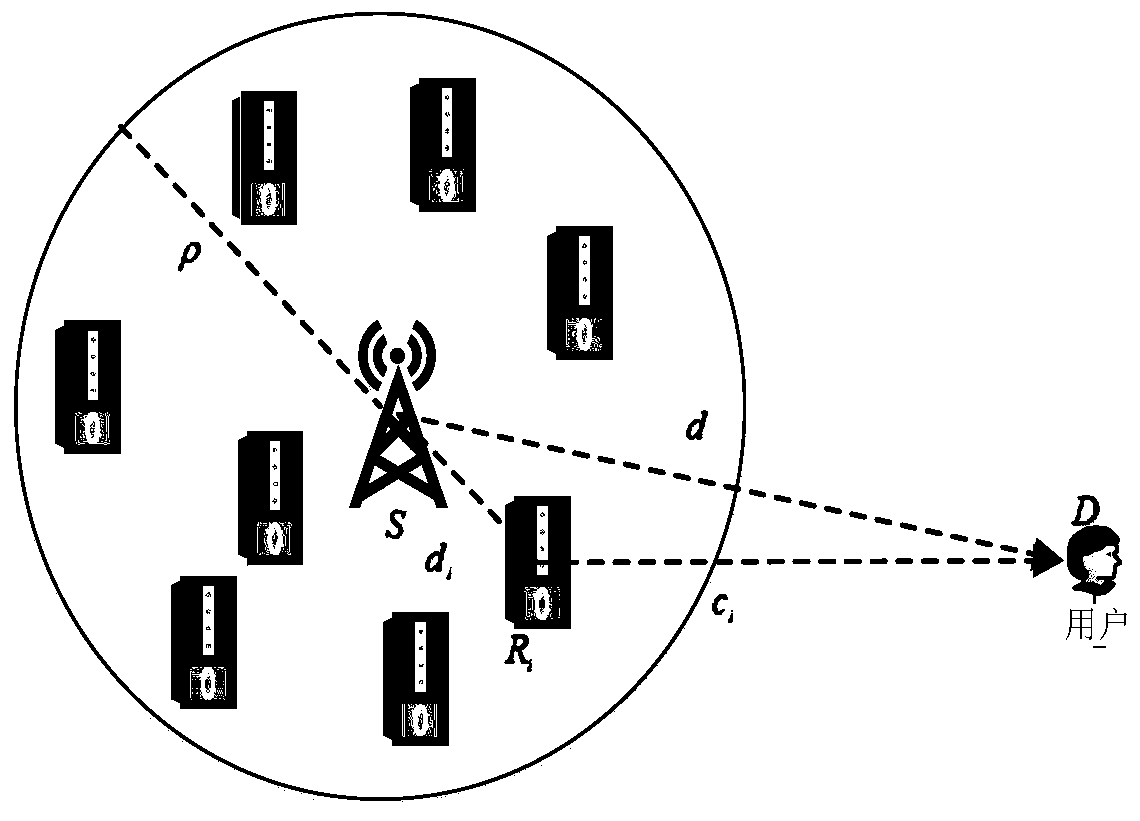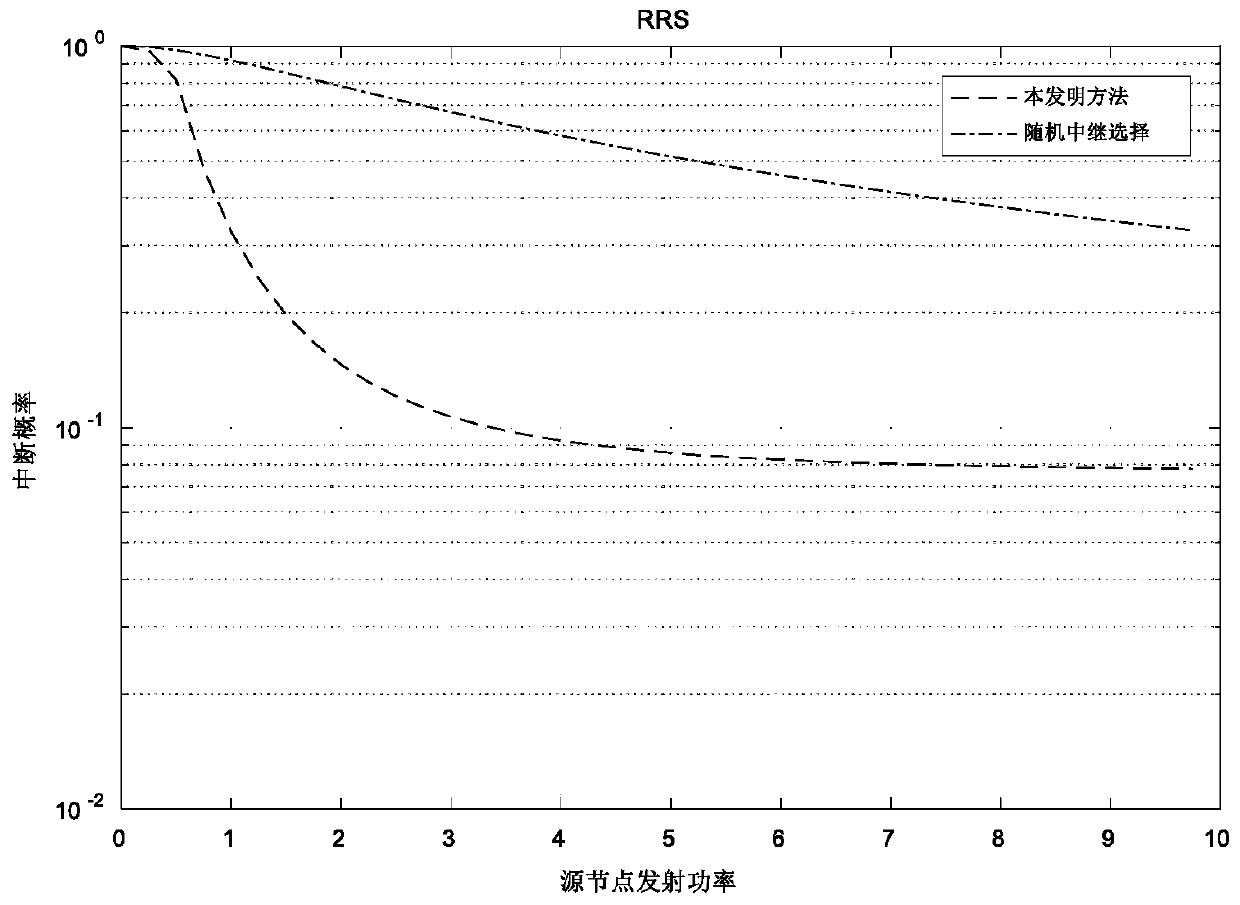Random relay selection method based on energy cooperation
A technology of energy and relay nodes, applied in the direction of electrical components, wireless communication, etc., can solve the problems of ignoring the feasibility of energy loss, blind transmission, energy consumption, etc., and achieve a solid and reliable mathematical model, long communication life, and low probability of interruption Effect
- Summary
- Abstract
- Description
- Claims
- Application Information
AI Technical Summary
Problems solved by technology
Method used
Image
Examples
Embodiment 1
[0035] With the rapid development of wireless communication technology, intelligent networks such as fifth-generation (5G) cellular systems and the Internet of Things (IOT) are coming, people's demand for ultra-high data transmission rates, high-density connections and high mobility will indeed be greatly affected be satisfied. All these services require user terminals to have high computing power for real-time signal processing, which accelerates the depletion of embedded batteries, and it is often inconvenient for sensor nodes to replace batteries regularly, especially in remote and low-income areas. Insufficient energy has become the bottleneck of the development of these communication systems and various intelligent Internet networks. The present invention conducts research on this situation and proposes a random relay selection method based on energy cooperation. See figure 1 , the present invention analyzes the energy cooperation between the source node and the relay nod...
Embodiment 2
[0060] The random relay selection method based on energy cooperation is the same as embodiment 1, wherein the energy collection and transmission analysis of the nodes described in step (4) specifically includes the following steps:
[0061] 4.1 Source node energy analysis: The source node selects the communication link according to its own energy state. When the energy storage state of the source node is greater than the energy consumed by sending data to the destination node, the direct link is selected for communication. The energy of the adjacent time slots of the source node The relationship is expressed as:
[0062] L s [n+1]=L s [n]+E s [n]-δ sd
[0063] Among them, L s [n] is the energy storage state of the source node battery in the nth time slot, L s [n+1] is the energy storage state of the source node battery in the n+1th time slot, E s [n] is the energy collected by the source node from the environment, δ sd is the energy consumed by the source node to send ...
Embodiment 3
[0073]The random relay selection method based on energy cooperation is the same as that in Embodiment 1-2, and the path probability P of the direct link is calculated in step (5) of the present invention 1 ,details as follows:
[0074] The performance of a communication system is measured by the corresponding index, and for the wireless relay network, the outage probability becomes the main index to measure it. When the link capacity C does not meet the required user rate r 0 When , an outage event will occur, so whether an outage can occur also depends on the average signal-to-noise ratio of the link and its channel fading distribution model, which is expressed by defining the outage probability as:
[0075] P out =P{C0}=P{γ<ε}
[0076] Among them, γ represents the signal-to-noise ratio, ε is the threshold of the signal-to-noise ratio, and r 0 is the information transmission rate in the communication process, and it can be known from Shannon's theorem Order P sd = δ s...
PUM
 Login to View More
Login to View More Abstract
Description
Claims
Application Information
 Login to View More
Login to View More - R&D
- Intellectual Property
- Life Sciences
- Materials
- Tech Scout
- Unparalleled Data Quality
- Higher Quality Content
- 60% Fewer Hallucinations
Browse by: Latest US Patents, China's latest patents, Technical Efficacy Thesaurus, Application Domain, Technology Topic, Popular Technical Reports.
© 2025 PatSnap. All rights reserved.Legal|Privacy policy|Modern Slavery Act Transparency Statement|Sitemap|About US| Contact US: help@patsnap.com



